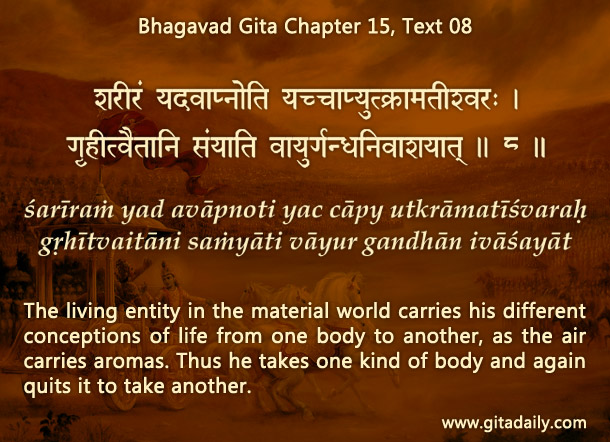The word ‘bondage’ often evokes an image of someone bound to a particular location, say, a hostage tied to a chair.
Our bondage in material existence is not so gross. We can move across cities, countries and continents. Indeed, by transmigration, we can even move from one universe to another – a journey whose speed and scope eludes the laws of nature as known to mainstream science today.
Yet no matter how extensive our journeys, through them all we remain bound in our conceptions of life: we conceive of ourselves as material beings and believe that material things will make us happy. The Bhagavad-gita (15.08) states that we carry our basic conception of life from one body to the next.
At one level, our conceptions do vary from species to species. A soul in a dog’s body conceives of itself as a dog and views a bitch as its source of pleasure. A soul in a peacock body conceives of itself as a peacock and views a peahen as its source of pleasure. Yet despite such variations, the materialistic misconception has a common denominator, as the Gita’s next verse (15.09) indicates: the notion that the contact of the senses with the sense objects brings pleasure. This conception binds our consciousness to matter and, due to the temporary nature of matter, to the cycle of samsara.
Only in the human form does the soul’s consciousness become evolved enough to question this materialistic misconception. For those of us who are enterprising enough to develop our human potential, the Gita provides the eye of knowledge (15.10: jnana-chakshu) to infer our true identity as souls, parts of Krishna.
And bhakti-yoga helps us to gradually realize our identity. When our conception becomes thus free from the fetter of matter, we attain liberation from material existence.
Explanation of article:




Although in essence immortal, our soul experiences a mortal world as long as it is focused on the transitory external nature of the Lord. When we shift our focus to Lord Sri Krishna’s transcendental nature, then, by His grace, our sensory imprints become engaged in His service through which our soul can experience its immortal nature again.
Very rightly said in comment by Mr Hans.